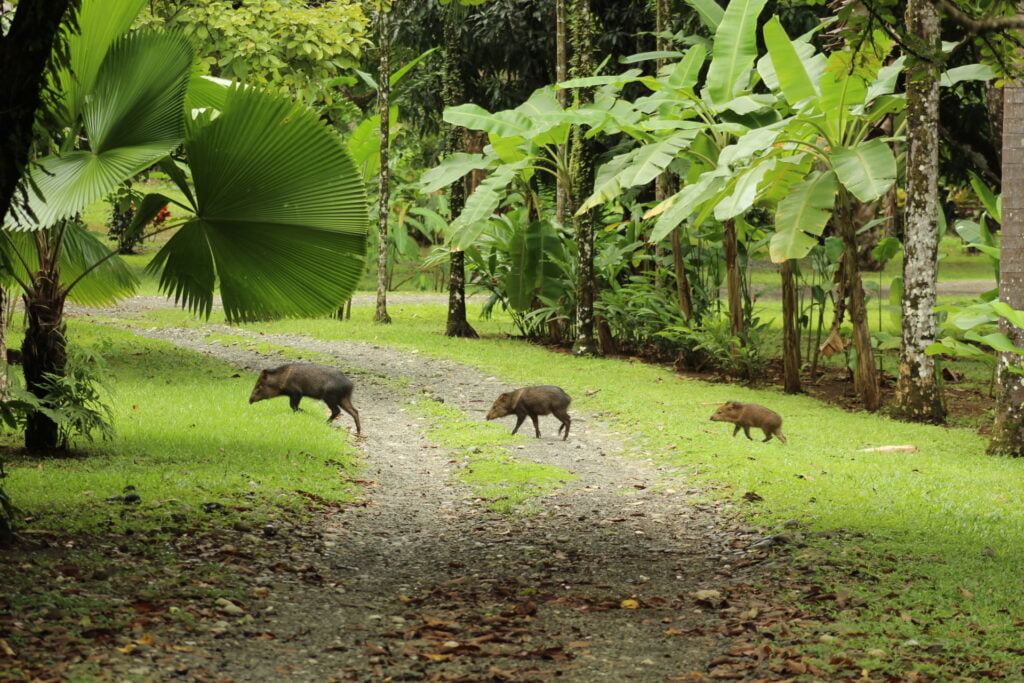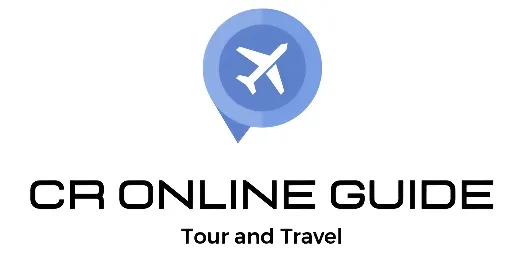
Corcovado National Park

The Corcovado National Park is one of the largest parks in Costa Rica, where 2.5% of the world’s biodiversity is found.
Created by Decree No. 53-57 of October 24, 1975, it has an area of 42,560 land hectares and 3,354 marine hectares. It is located at a maximum altitude of 782 meters above sea level.
The climate in the park is hot, rainy and very humid, its distribution of climates throughout the year would be: dry season from mid-December to mid-April, with sporadic rains, and rainy season from mid-April to mid-December.
Precipitation reaches an average of 5500 millimeters in the mountainous area. In the coastal zone 3500 millimeters.
Main attractions are:
San Pedrillo: It consists of the Catarata-San Pedrillo trail (1.5 km), the Llorona trail (7 km), the Pargo upstream and coastal trail (2.5km) and the Marcos Reyes trail.
Sirena: It has local trails (20 km in total) where you can enjoy the Claro River pool. Near the mouth of the Sirena River, during high tide you can see bull sharks and crocodiles.
The Lioness: During the turtle nesting season you can observe the births.
El Tigre: Strong hike (7 km) with viewpoints from some of the highest points of the Park.
Los Patos: Local trails from where you can see the Rincón River, waterfall and forests with tall trees; In addition, it passes near the Guaymí Indigenous Reserve.
Take into account that, to complete the entire Patos-Sirena-Leona route, a three-day stay is recommended, or you can opt for a single-day visit and choose one of the routes.
It has an approximate number of species of
• 140 species of mammals
• 400 species of birds, 20 of them endemic
• 40 species of freshwater fish
• 117 species of amphibians
• 10,000 types of insects
• 28 species of lizards
Some of the species are the following
1. Monkeys
to. howler howler
b. Cappuccino, white-faced
c. spider, colorado
d. squirrel, marmoset
2. Some of the Felines
to. Ocelot
b. margay
c. Jaguarundi
d. Cougar
and. Jaguar
3. Some other mammals
to. Deer
b. Agoutis
c. Anteater
d. Otters
and. Bats
F. Dantas
In addition to this, you will find many birds to observe within the national park, as well as many insects.
Conditions for entering the park:
Reservations can be made up to a maximum of 6 months in advance for all Sectors of the National Park.
Remember that to enter the park you must do so accompanied by a local guide who is registered with the ACOSA Sustainable Tourism Program office before making the reservation (we have this requirement). Otherwise, you will be denied entry to the Protected Area.
Reservations are personal, they will not be transferable to other people.
To enter, you must present your identification (passport or ID card) in the respective sector of the protected area.
Rules:
Do not stray from the established path.
Bathing in beaches, lagoons or rivers is prohibited.
Do not feed, touch or harass wild animals.
Do not bring alcoholic beverages or drugs of any kind into the Park.
If you do not comply with these rules, you will be exposed to expulsion from the park and your corresponding report to the corresponding authorities.
Recommendations:
It is recommended to bring the following equipment: Backpack for long walks.
Garbage bags
Hiking boots or shoes
Canteen, Food authorized for hikes per person (Bottled water, hydrating drink, seeds, dehydrated fruits, energy bars)
Sunglasses
Flashlight
Repellent
Sunscreen
Photographic camera
Access to the park can be done from different places, the most recommended being
Puerto Jimenez:
From Puerto Jiménez you can access the national park through the Sirena or Los Patos stations, to get to Puerto Jiménez, you can do it by air from San Jose, or by land, either by vehicle or by private transportation.
This population center has accommodations for overnight stays, as well as Lodge-type hotels that have their own reservation.
The tours mostly start from the center of town, you can check our tours.
Drake Bay:
From Bahía Drake you can access the national park through the Sirena station, to get to Bahía Drake, you can do it by air from San Jose, or by land or vehicle, in this case it should be a 4×4 because access is for that type of vehicle only because streams must be crossed
This population center has accommodations for overnight stays, as well as Lodge-type hotels that have their own reservation.
The tours mostly start from the center of town, you can check our tours.
